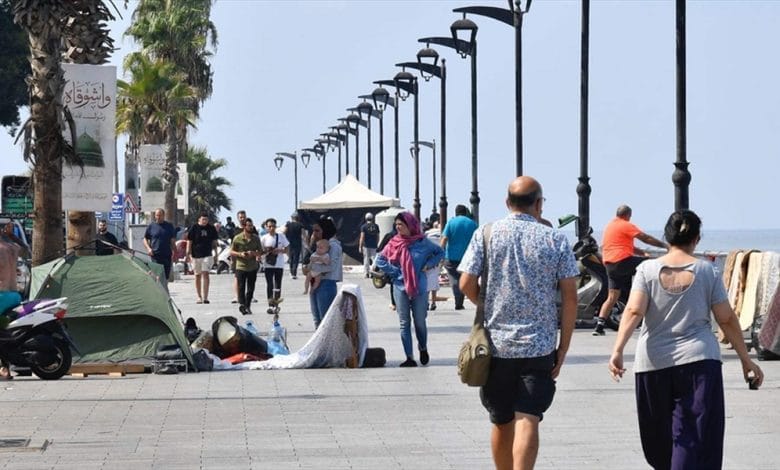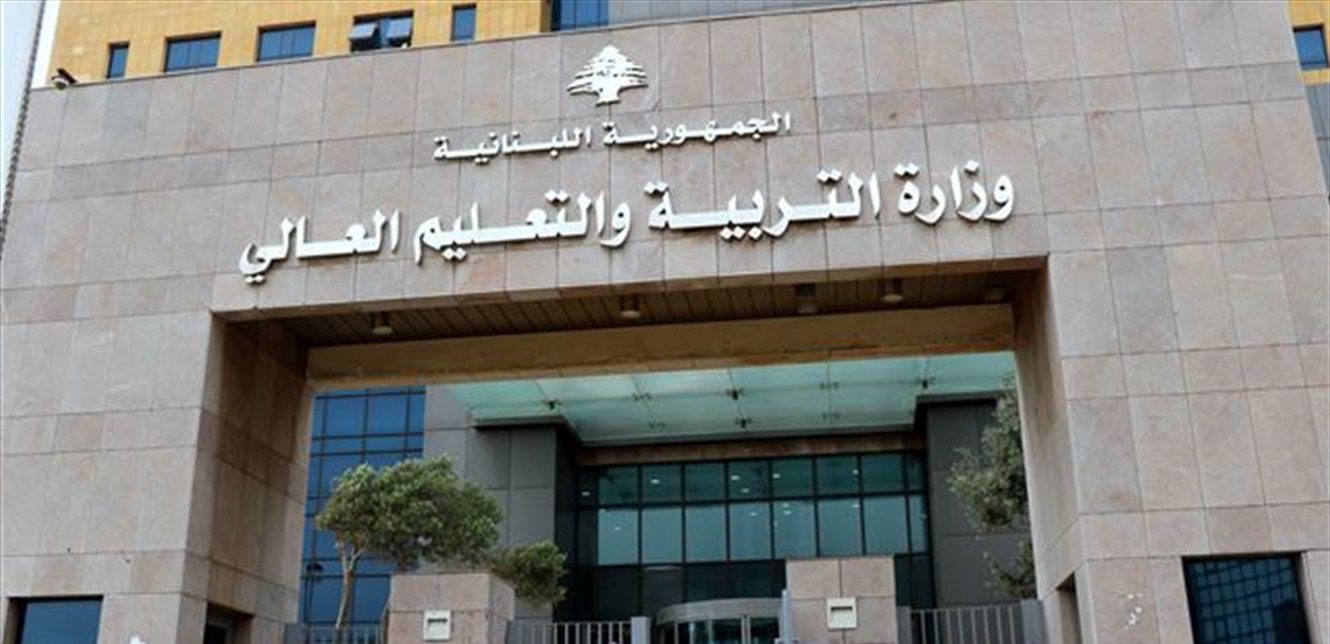250 ألف عاطل عن العمل… «اللواء» تكشف خسائر الحرب بالأرقام وتطرح تساؤلات حول دقة الإحصاءات الرسمية للنازحين
ويوجد حوالي 700 ألف لدى أسر وعائلات، مما يعني أن هناك 900 ألف نازح موزعين بين مراكز إيواء ولدى أسر وعائلات. في حين أن 28 ألفا غادروا إلى العراق، ونحو 210 آلاف انتقلوا إلى سوريا، وتوجه 150 ألفا إلى دول أخرى. لذلك، قد يفوق عدد المهجرين المليون و200 ألف نازح، لكن لا يوجد في لبنان أكثر من 900 ألف مهجّر».
المصدر: ندى عبد الرزاق – اللواء
250,000 Unemployed… “Al-Liwaa” Reveals War Losses in Numbers and Raises Questions About the Accuracy of Official Displacement Figures
As the Israeli war on Lebanon intensifies since October 8, 2024, the full extent of the massive destruction in various sectors becomes more apparent each day, with figures that continue to shock the Lebanese public. From the total destruction of homes and public facilities to the direct damage to infrastructure, businesses, and agriculture, the questions surrounding the actual scale of these losses, which are now estimated in the billions, are growing. How can a country already struggling with a severe economic crisis bear the cost of rebuilding over 46,000 homes that were completely destroyed and thousands more that sustained varying degrees of damage? And what measures can be taken to mitigate the burden of internal and external displacement that has affected hundreds of thousands?
In the midst of this disaster, the economic reality emerges as one of the most alarming consequences of the war, with unemployment rates rising to around 250,000 workers and the risk of business closures in key sectors. With no clear plans for reconstruction or compensation, the most pressing question remains: is it enough to simply document setbacks, or is the country facing a crisis that goes beyond numbers to an inevitable social and economic collapse as the conflict continues?
As Israeli airstrikes and the widespread destruction continue in various Lebanese areas, the losses go beyond cold statistics, extending to the real-life suffering of citizens. Between demolished homes, businesses that have become mere ruins, and farmers who lost everything they had invested in the olive season and other agricultural projects, human stories are emerging, highlighting the extent of the catastrophe that has affected wide segments of the Lebanese population. These personal accounts reveal the deep impact of the disaster on people's lives and livelihoods.
Heartbreaking Firsthand Accounts!
In this context, a displaced person shares his tragedy with “Al-Liwaa” after his home was completely destroyed in a heavy bombing that targeted the village. He says: “We had spent all our savings to repair the house after it was damaged in previous events, and now we are starting from scratch again. My house is just a pile of rubble, and I couldn’t even get any of my belongings out. Now we are living in a temporary shelter, and we don't know how long we’ll stay here.”
Similarly, a small restaurant owner in one of the border villages speaks of the devastation he faced after his restaurant was completely destroyed in Israeli airstrikes. He says: “The restaurant was my family's only source of income. The building was directly hit by the bombing, and all that’s left is rubble. The equipment, refrigerators, and tables are all gone. I have no way to start over, especially with the deteriorating economic situation.”
Mrs. Rose, from the Deir Mimas area, had been preparing for the olive harvest after heavily investing in machinery and tools for the work. But she was shocked when an Israeli airstrike targeted the place where she kept her olive oil production equipment. She says with sadness: “I had bought a new olive oil press, and I was counting on the season to pay off my debts from the equipment. But the bombing destroyed everything, and I only have a few olive trees left that survived. I don't know how I will recover from this loss, especially since farming is my only source of income.”
These examples represent the type of damage the country has suffered, and it goes beyond the areas witnessing direct combat between Hezbollah and Israel to encompass the entire Lebanese territory. Many businesses, restaurants, tourism facilities, and commercial establishments are either on the verge of closing down or have already shut their doors, suffering significant losses.
Accurate Data, Painful Losses!
Mohammad Shamseddine, a researcher at the “International Information” center, explains to “Al-Liwaa” that “Lebanon’s total losses from the Israeli war, from October 8 to November 15, 2024, are estimated at around 11 billion dollars. These losses are twice as much as those suffered by the country in the 2006 war, which amounted to 5.3 billion dollars.”
How are these losses distributed? He breaks it down as follows: “We have infrastructure losses estimated at about 570 million dollars, which is less than the losses of 2006, as the bombing targeted roads, bridges, electricity, and communications at that time. Regarding residential losses, including complete destruction, partial damage, and minor damages, about 46,000 homes have been completely destroyed, while nearly 30,000 have suffered partial damage, and 145,000 sustained minor damages. These numbers are accurate as of November 15, 2024.”
He continues, “Until September 16, 2024, we relied on precise statistics, but after September 17, we began to rely on reports from various media outlets about the results of Israeli bombing. These reports include the destruction of a home, damage to a number of residential units, or minor damage to several buildings. Therefore, we can say that the statistics since September 17, 2024, are not precise, as we depend on what is published in the media.”
Shamseddine adds: “We relied on the fact that the cost of a completely destroyed 200-meter house is approximately 75,000 dollars, which is the minimum cost, as there are palatial homes and other luxurious buildings that cost around 100,000 dollars. The cost of partially destroyed homes is estimated at 25,000 dollars, while minor damages are valued at about 5,000 dollars. In total, the cost of rebuilding fully and partially destroyed homes and minor damages is approximately 4.85 billion dollars according to these standards. It is worth noting that the cost of destroyed and damaged homes in 2006 was estimated at 2.2 billion dollars.”
The National Economy is “at Risk”!
He discusses “the damages to commercial, industrial, and tourism institutions, which amounted to 530 million dollars,” and notes the difficulty in determining the losses in the agricultural sector, especially with the fires, stating: “While we have statistics showing that olive orchards in certain areas have been burned, we can't know if these trees were mature or how old they were (a hundred or ten years old). Therefore, there is difficulty in estimating losses in this sector, but they are no less than 900 million dollars.”
For debris, there are also “costs.” He mentions “additional expenses related to debris removal and other uncalculated costs, which are estimated at around 390 million dollars, in addition to the indirect losses suffered by the economy due to the economic downturn. These indirect losses were recorded at 1.2 billion dollars in 2006, but now they have risen to about 8.86 billion dollars.”
Displacement: Questions About the Accuracy of the Numbers
Regarding the number of displaced people and the calculation of losses, Shamseddine explains to “Al-Liwaa” the method for calculating these losses: “The government talks about 1.4 million displaced people, but in reality, we have around 200,000 displaced people in shelters, and this is the highest estimate. The number may be lower. About 700,000 are with families, meaning that the total number of displaced people could exceed 1.2 million, but there are no more than 900,000 displaced people in Lebanon.”
Risks Loom Over the Country from Every Angle!
He mentions “the enormous economic risks due to this ordeal, as nearly 250,000 people in affected areas, including those engaged in armed clashes, are unemployed. However, the greatest fear remains if these hostilities continue for months, as businesses in Beirut, Mount Lebanon, and the north may close down, lay off workers, or keep them with reduced salaries. This would lead to serious social and economic problems, and we hope the war ends soon to avoid this difficult economic reality, especially with the soaring unemployment rates.”
Reconstruction “Possible”!
In conclusion, Shamseddine affirms that “the necessary estimates for reconstruction are not possible before the conflict ends. We must wait to see the available means and funding. The state should immediately create a dedicated institution for reconstruction, just like the institution created for reconstruction after the 1956 earthquake. The Ministry of Displaced and the Displaced Fund’s experience was a failure, so a successful management system, similar to the National Reconstruction Corporation that rebuilt the areas destroyed in 1956, should be established.”
Translated by economyscopes team
 سكوبات عالمية إقتصادية – EconomyScopes إجعل موقعنا خيارك ومصدرك الأنسب للأخبار الإقتصادية المحلية والعربية والعالمية على أنواعها بالإضافة الى نشر مجموعة لا بأس بها من فرص العمل في لبنان والشرق الأوسط والعالم
سكوبات عالمية إقتصادية – EconomyScopes إجعل موقعنا خيارك ومصدرك الأنسب للأخبار الإقتصادية المحلية والعربية والعالمية على أنواعها بالإضافة الى نشر مجموعة لا بأس بها من فرص العمل في لبنان والشرق الأوسط والعالم




